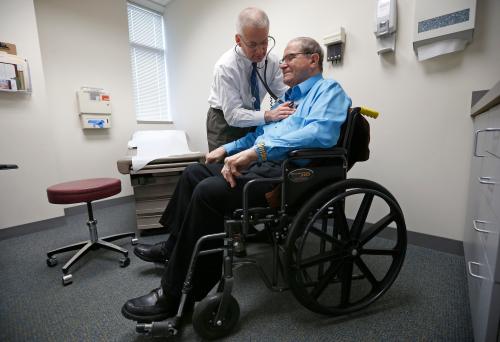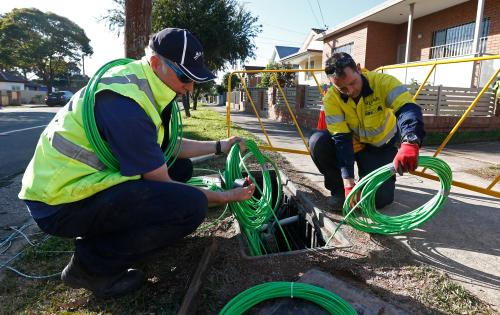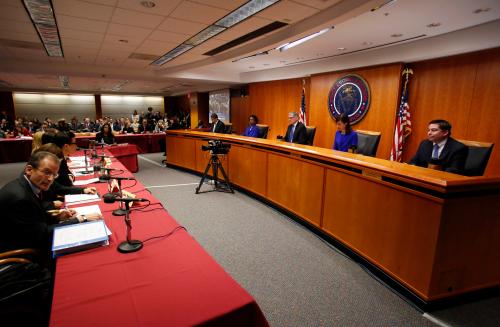The higher speeds of fifth-generation (5G) wireless networks will enable connected cars, telemedicine, and the broader internet of things. Preparing for next-generation networks and their many applications will require upgrading existing wired infrastructure and freeing up wireless spectrum. To discuss the path to 5G for the U.S., the Center for Technology Innovation hosted a conversation at the Brookings Institution on June 26 between CTI Fellow Nicol Turner-Lee and Commissioner Brendan Carr of the Federal Communications Commission.
Commissioner Carr emphasized that 5G networks will have both wired and wireless components. To achieve higher speeds, 5G networks will take advantage of high-band spectrum that travels over shorter distances. Unlike tall cell towers that cover wide areas, small cells attached to buildings and utility poles will carry 5G signal to a city block. The FCC is updating siting regulations allow placement of many small cells in densely-populated areas. Each installed small cell will also need new fiber-optic cable connections, which must satisfy local regulations for installation. Eventually, 5G signal will also travel over mid- and low-band frequencies, and the FCC is preparing to make wireless spectrum available for use across frequency bands.
High-speed broadband will have a wide range of applications. Healthcare costs for chronic illness add up quickly, but seeing a doctor remotely can reduce travel time and costs for patients. The lower latency of 5G networks also allows surgeons to operate remotely using robots. In transportation, autonomous vehicles will communicate with each other using 5G networks, sharing information in areas that lack well-marked roads. Dense clusters of small cells could also make 5G networks more resilient to severe weather events and disasters.
According to Commissioner Carr, successful 5G deployment demands total coverage, not just in major cities. Low-density rural areas may have different infrastructure needs from low-income urban areas, but high-speed internet connectivity is essential in both contexts. Beyond geographic coverage, 5G connectivity must be affordable to ensure customers gain access. Existing FCC programs such as Lifeline can lower the cost of mobile phone and internet service for low-income households, and removing barriers to competition will attract new internet and phone companies to provide 5G service at lower costs. Without low costs and wide coverage, 5G deployment may expand gaps in high-speed internet access rather than shrink them.
Christoph Mergerson contributed to this blog post.







Commentary
How to build 5G networks in the U.S.
June 28, 2018